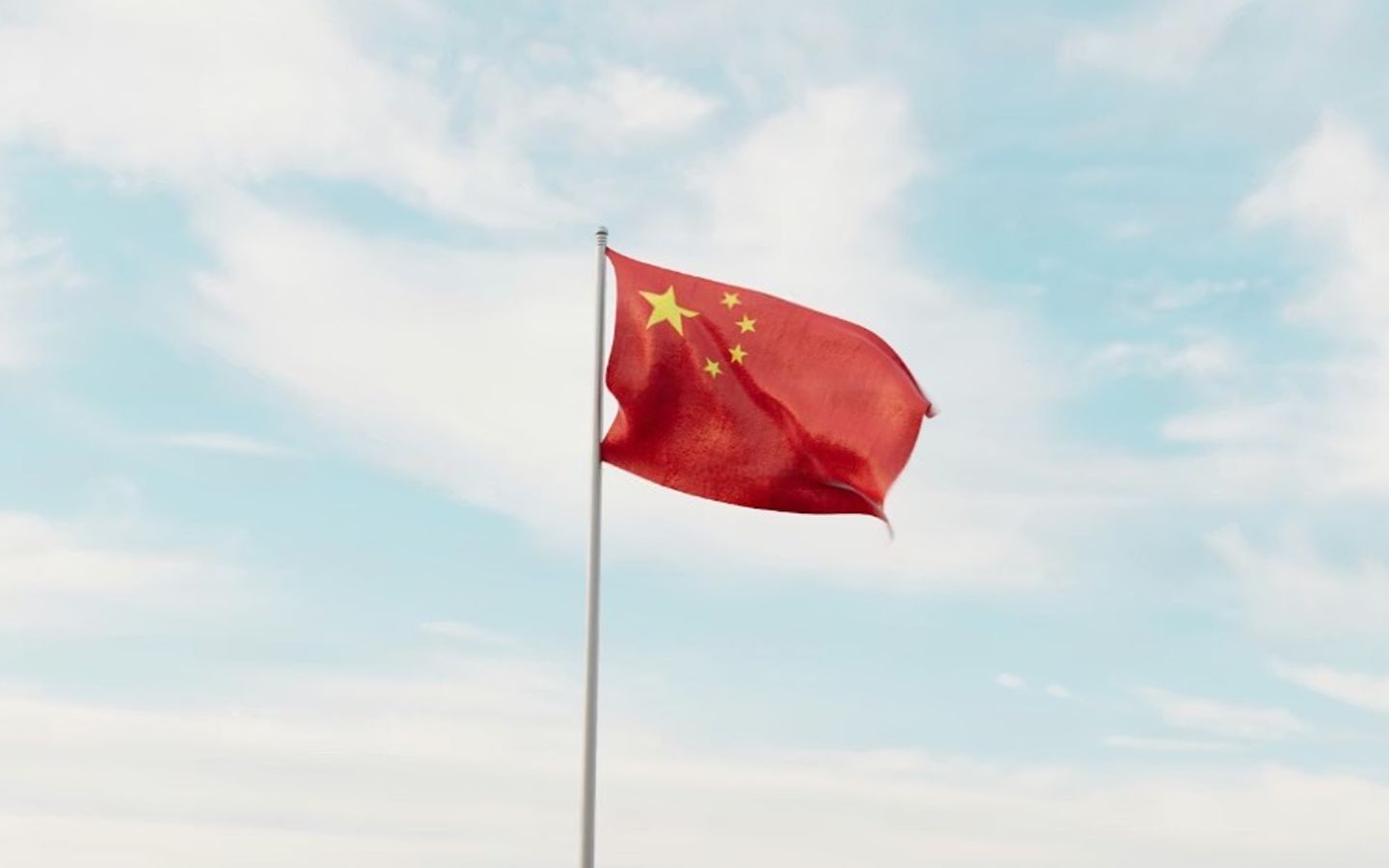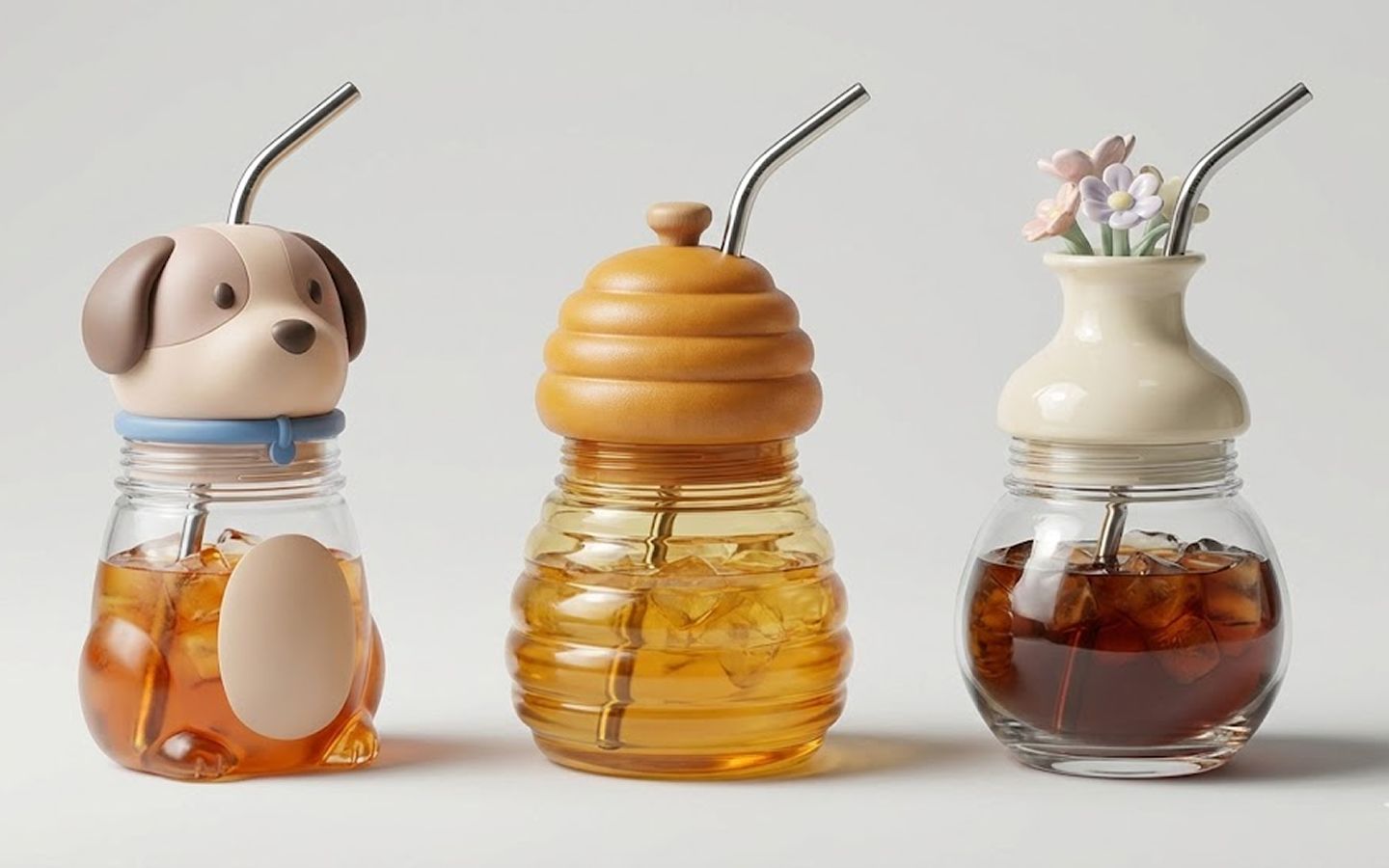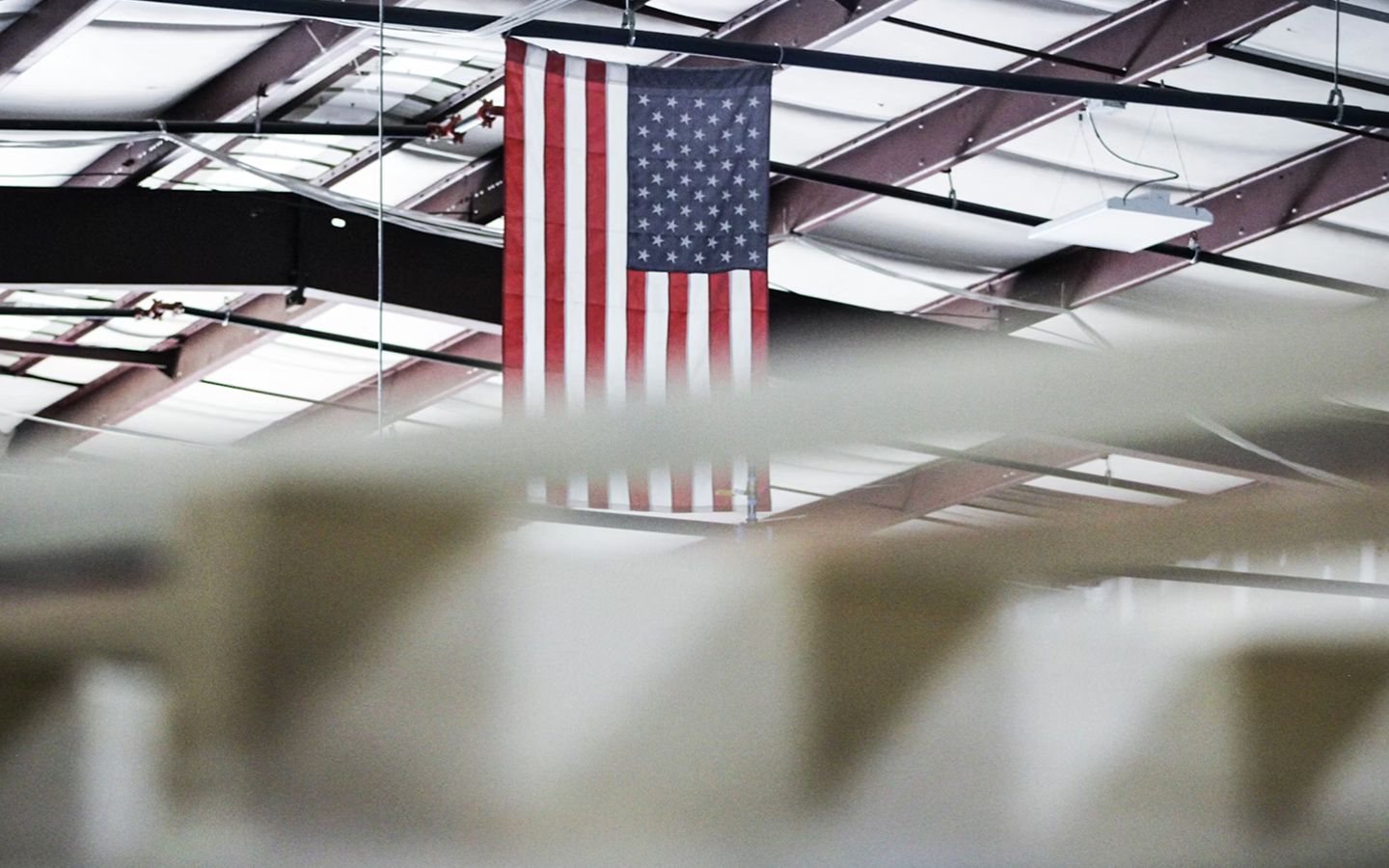Types of Hoodie materials: how to choose the best fabric
Starting a hoodie business can be extremely profitable. Do you want to know the secret to a successful hoodie collection? It’s all about choosing the best fabric.
The global market for hoodies and sweatshirts is projected to reach USD 381.40 billion by 2032 and North America dominates this highly lucrative industry, with a rising trend in outdoor activities and comfortable apparel.
Each fabric has a direct impact on the warmth and durability of your clothing line. That’s why choosing the right material is one of the most important steps when designing custom hoodies.
Key takeaways:
Ensure that your fabric selection is aligned with your target audience's lifestyle.
If you're targeting eco-conscious customers, consider sustainable fabric options such as organic cotton or recycled polyester.
For hoodie customizations, the fabric thickness and texture will impact the design's durability.
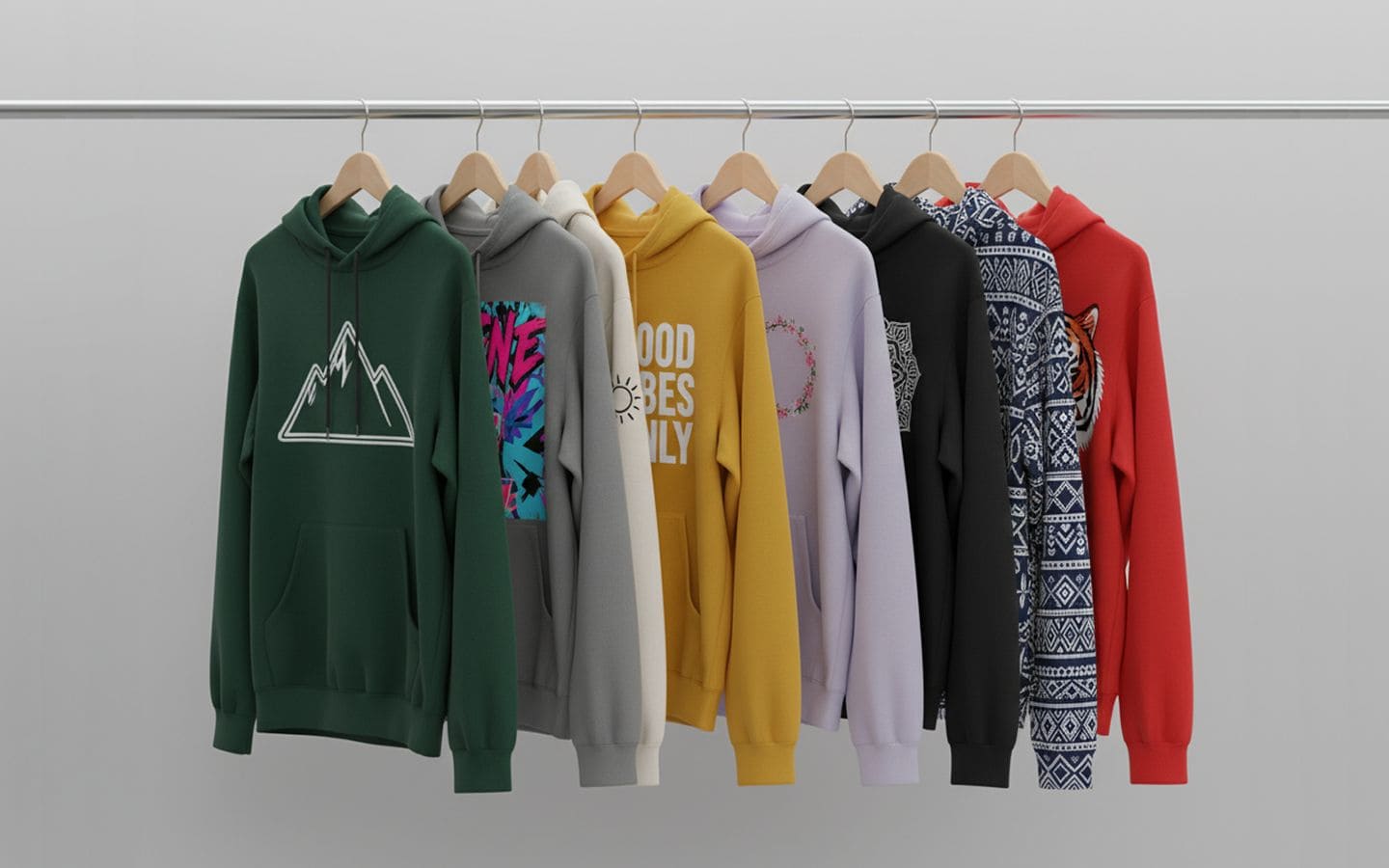
What are the most popular Hoodie fabrics?
When designing custom hoodies, it’s important to consider that different fabrics bring different qualities to them, from softness and warmth to stretch and durability.
Here’s a breakdown of the most common hoodie fabric materials:
Cotton: A popular choice, not only for hoodies but also for sweatshirts and all types of clothing. This natural fiber is highly appreciated due to its softness, comfort, and breathability.
Polyester: A synthetic fabric known for being one of the most cost-effective textiles. Popular for its wrinkle-resistant and quick-drying properties.
Cotton and polyester blend: Combining the best of both materials, it’s a great fabric for hoodies. It’s lightweight, feels comfortable against the skin, and provides durability and warmth.
Fleece: A lightweight, cozy, and warm fabric. Ideal for all weather conditions, but especially popular for winter hoodies due to its insulated properties.
French terry: A versatile knit fabric, frequently used in activewear or loungewear items such as hoodies and sweatpants. Naturally wrinkle-resistant, it’s a midweight material mostly made from cotton.
Spandex: A popular synthetic material in activewear, usually blended in small percentages to add stretch and flexibility.
Jersey: A soft and stretchy knit fabric made from cotton, wool, or synthetic fibers. Typically used in casual hoodies and sweatshirts because of its breathability and durability.
Rayon: A semi-synthetic fabric often used in hoodies and sweatshirts to offer breathability, softness, and a good drape.
Wool: A natural fiber known for its insulating and moisture-wicking properties. Not common in mass production, making wool hoodies a premium choice.
Nylon: A synthetic fiber known for its smooth finish, durability, and wind resistance. A lightweight material that, when used in hoodies, provides great insulation.
Using THE/STUDIO, you can experiment with these fabrics to create custom hoodies for your brand. With no minimum order requirements, you can design single pieces before committing to large quantities.
Factors to consider when choosing the best Hoodie material
There’s no right or wrong choice of the best hoodie fabrics for an apparel line. The fabric selection should align with both your design vision and your customer’s lifestyle.
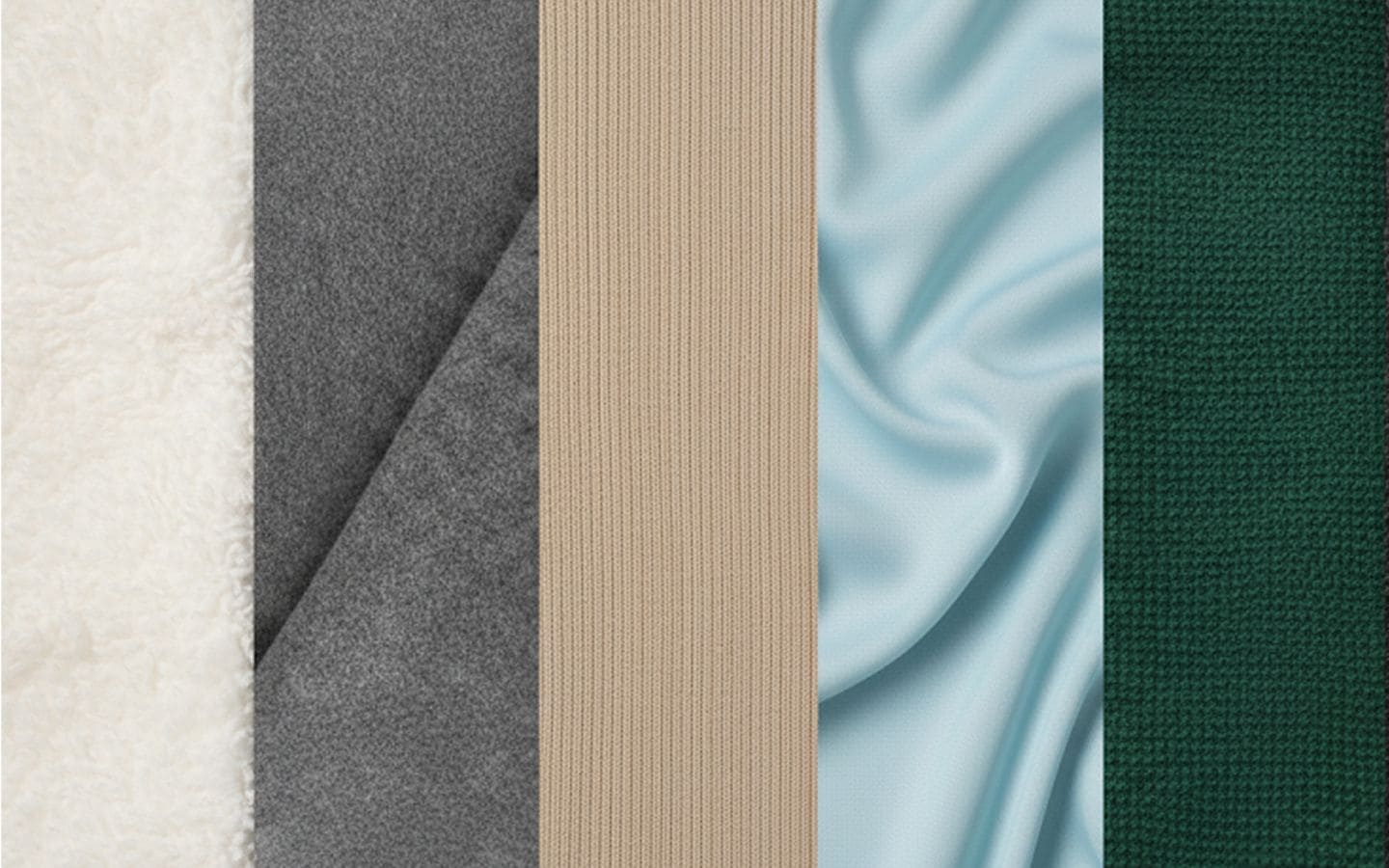
Key considerations include:
Breathability: Natural fibers like cotton and French terry keep wearers comfortable in different climates.
Warmth: Fleece and wool provide superior insulation.
Durability: Polyester and nylon resist wear, shrinkage, and fading.
Comfort: Blends balance softness with strength.
Style: French terry and rayon elevate fashion-forward designs.
Stretch: Spandex blends enhance mobility.
Print compatibility: Cotton and cotton-polyester blends take screen printing and embroidery well.
Sustainability: Organic cotton, recycled polyester, and eco-friendly blends appeal to conscious consumers.
FAQs about the fabric used in Hoodies
Are Hoodies and Sweatshirts made using a special fabric?
While most hoodies are made from common fabrics like cotton or cotton-poly blends, using specialty fabrics allows designers to meet specific customer needs.
You should choose the fabric according to the intended performance or style purposes. For example:
Moisture-wicking fabrics keep activewear hoodies dry.
Brushed fleece enhances warmth and softness.
Thermal knits trap heat for colder weather.
High-end cotton or wool blends give luxury collections a premium feel.
What is the warmest material for a Hoodie?
Wool and fleece are the top choices for warmth, but they work in different ways.
Wool is a natural fiber that traps heat while still allowing breathability, which makes it excellent for cold-weather outdoor wear.
Fleece, made from synthetic fibers, is lightweight and insulates well without adding bulk.
Both materials are great for winter collections, but wool gives a more premium feel, while fleece is practical and easy to care for.
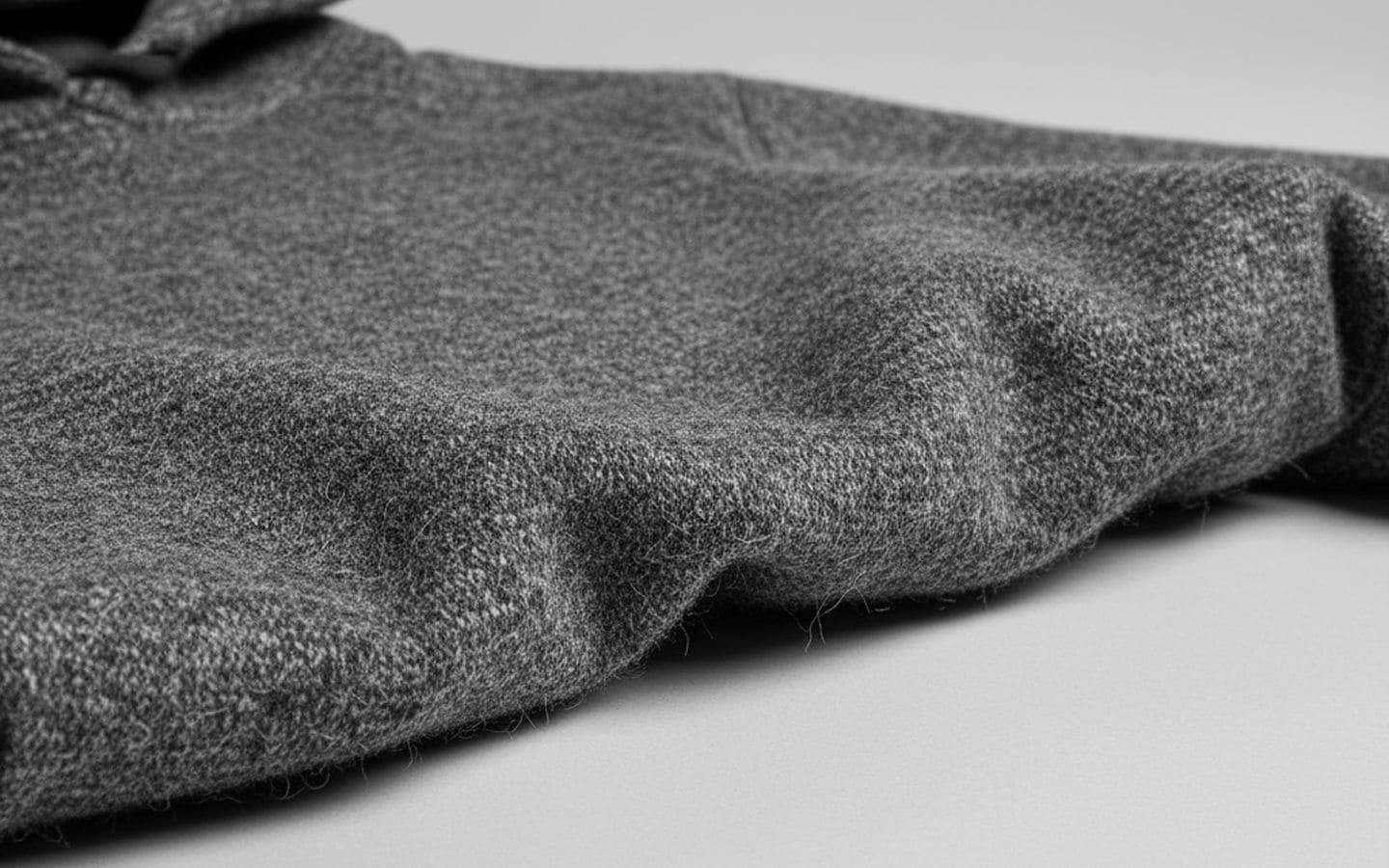
Which knit fabric is best for Hoodies?
French terry and fleece are the most popular knit options.
French terry features a smooth exterior and a looped interior, providing breathability and comfort that work year-round.
Fleece, on the other hand, is brushed for softness and warmth, making it the better option for colder climates.
Your choice depends on whether you want a lightweight, versatile hoodie or a heavier, cozy style.
What fabric works best for workout Hoodies?
Sportswear typically utilizes polyester or polyester blends combined with spandex. These fabrics are quick-drying, breathable, and flexible, which helps during training or outdoor activity. They also hold up well to frequent washing without losing shape.
For brands focusing on athletic wear, choosing moisture-wicking polyester with added stretch ensures customers feel comfortable while staying active.
Can I use any fabric to make a Hoodie or a Sweatshirt?
In theory, yes, you can design a hoodie with almost any textile. But in practice, certain fabrics perform better.
For example, cotton is breathable but not ideal for high-intensity workouts. Polyester is durable but may feel less soft if not blended.
Selecting the best fabric for hoodies is about balancing comfort, performance, and style so the hoodie works for its intended purpose and for your target audience.
Are fabric blends a good choice for Hoodies?
Yes, blends are often the best option for balancing qualities.
Cotton-poly blends are popular because they combine the softness and breathability of cotton with the strength and wrinkle-resistance of polyester.
Spandex improves stretch and shape retention. For example, streetwear hoodies with fitted silhouettes often include spandex for comfort and mobility.
Blends are practical for large-scale production since they’re durable, cost-effective, and versatile.
Which Hoodie fabrics are more eco-friendly?
Organic cotton and recycled polyester are considered more sustainable choices. Organic cotton reduces pesticide use, while recycled polyester gives a second life to plastic waste.
Brands looking to build an eco-conscious collection often combine these fabrics with responsible dyeing and finishing methods.
Sustainability is becoming a priority for customers. Pair eco-friendly fabrics with popular apparel trends to create collections that appeal to your audience while reflecting your brand’s values.
What are the best Hoodie materials for trims and decorations?
Trims and decorations, such as ribbed cuffs, drawstrings, embroidery, and custom patches, interact differently with various fabrics.
Cotton and cotton-poly blends are ideal for embroidery and screen printing because they hold stitching and ink well.
Fleece and French terry provide soft surfaces but may require thicker threads or stabilization for embroidery.
Synthetic fabrics like polyester are durable for heat transfers and sublimation printing.
When planning trims or decorations, consider fabric thickness, stretch, and texture to ensure your designs stay crisp and last through repeated wear.
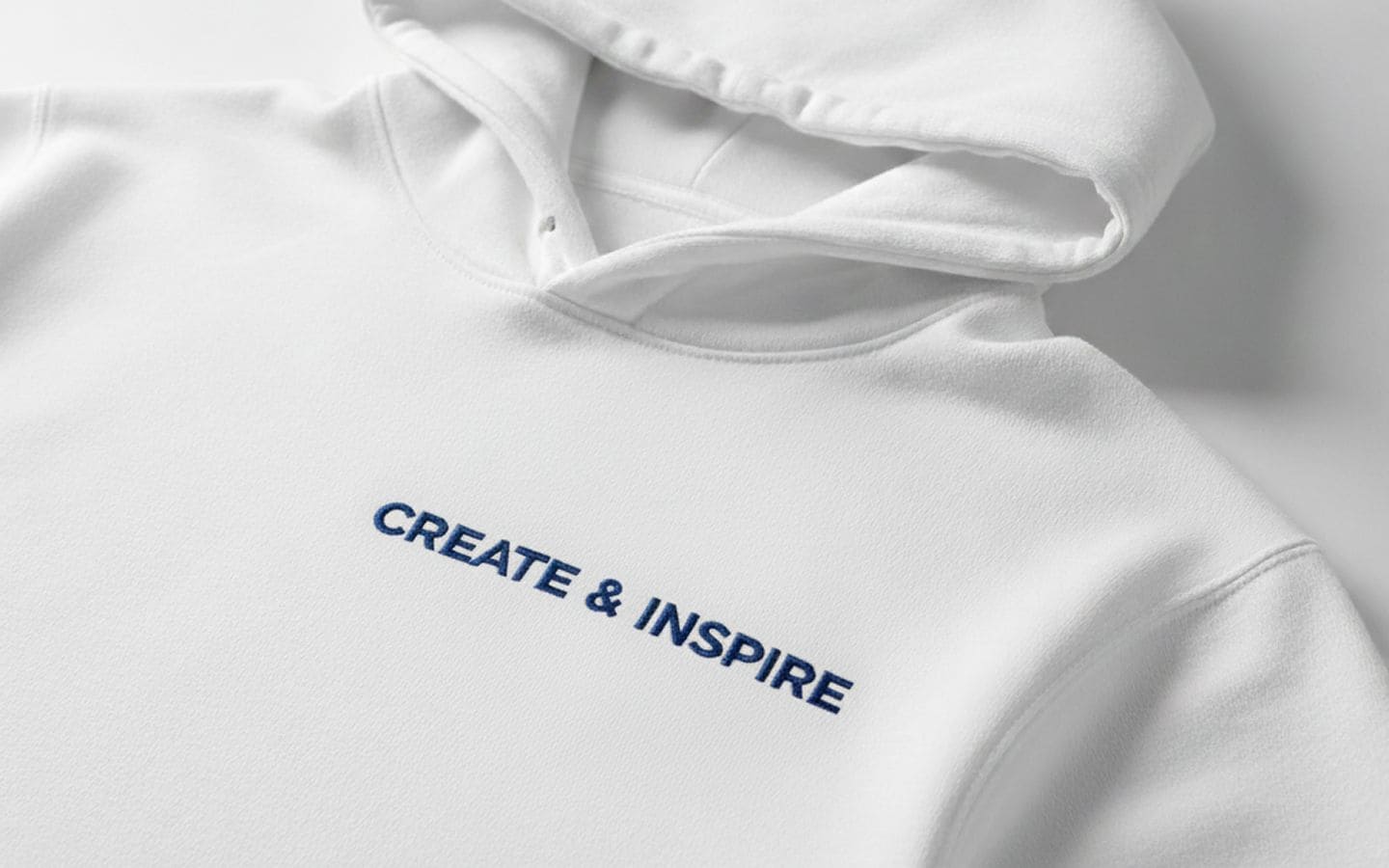
How do I print or decorate a Hoodie?
Screen printing, embroidery, and heat transfer are the most common decoration methods.
Cotton and cotton-poly blends take ink well, producing vibrant prints and crisp embroidery.
Polyester can also be printed on, but may require sublimation printing for best results.
For textured fabrics like fleece or French terry, embroidery is often the most durable option.
💡 Read more about sublimation printing vs. screen printing.
What to consider before customizing Hoodies?
Before adding logos, prints, or embroidery, consider the following factors:
Fabric compatibility: Some fabrics absorb ink better or hold embroidery more securely.
Stretch and recovery: Highly stretchy fabrics may distort designs; small spandex blends can help.
Durability: Heavy or textured fabrics may wear differently under prints or stitching.
Care requirements: Customers expect designs to last through multiple washings, and the fabric choice impacts longevity.
Purpose and style: Match your customization method to the intended use, such as performance hoodies, fashion-forward designs, or seasonal collections.
How do I print a logo on my Hoodie collection?
Printing a logo successfully depends on the fabric and design method. Always choose a printing method that complements your hoodie fabric to maintain comfort, durability, and aesthetic quality.
Consider the following printing techniques for a custom hoodie:
Screen printing: Works best on cotton or cotton-blend hoodies; produces vibrant, long-lasting designs.
Heat transfer or vinyl: Suitable for synthetic fabrics like polyester; allows precise, full-color graphics.
Embroidery: Ideal for premium and textured fabrics; adds a tactile, durable element.
Sublimation: Works only on polyester or poly-coated fabrics; perfect for full-coverage, detailed prints.
The easiest way to create custom hoodies is by using platforms like THE/STUDIO to:
Select fabrics.
Add logos or artworks.
Preview designs before production.
This ensures that your customization options align with your hoodie material choice, maintaining the quality of your apparel collection.
Final thoughts
Selecting the best material for hoodies involves evaluating fibers, breathability, stretch, printing compatibility, and environmental impact. Each decision affects not only the feel and appearance of the garment but also its performance, longevity, and customer satisfaction.
With THE/STUDIO, you can create your own hoodies with precise fabric choices, from printed men’s hoodies to embroidered women's hoodies. If you need help creating your custom apparel, our team is available to support you.


